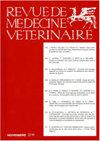作为牲畜景观连通性战略的森林畜牧系统的当地知识和参与式设计
Q2 Veterinary
引用次数: 5
摘要
森林砍伐造成了支离破碎的畜牧业景观,其特点是多样性丧失、荒漠化面积增加、自然资源恶化以及畜牧业系统效率低下。森林放牧系统是恢复领土的另一种选择。这项工作的目的是收集当地牲畜生产者关于具有饲料潜力的树种的知识,以便设计参与式森林放牧系统,改善连通性和牲畜系统。对来自三个省的35名生产者进行了调查,询问他们本年度加勒比地区牛和其他动物对树种的消耗情况。生产者确定了几个物种;采集未经管理的成树样本进行分类和营养品质评价。鉴定出家养和野生动物食用的16种树种;牛全年吃树叶,旱季吃果实。不同种属的营养品质不同。叶片含有高浓度的蛋白质,但由于年龄(旧饲料),消化率较低或中等。水果具有较好的消化性和良好的营养成分。有必要开展研究,确定这些物种的营养贡献与年轻的材料(较短的再生时间),因为饲草的年龄降低了其营养质量。农民和养牛人对多用途树木的当地知识有助于参与式森林系统设计,增加森林遗迹之间的功能多样性和连通性,有利于牲畜系统的生产力和生态系统的保护。本文章由计算机程序翻译,如有差异,请以英文原文为准。
Conocimiento local y diseño participativo de sistemas silvopastoriles como estrategia de conectividad en paisajes ganaderos
Deforestation has generated a fragmented livestock landscape, characterized by the loss of diversity, increasing areas in process of desertification, deterioration of natural resources, and inefficient livestock systems. Silvopastoral systems are an alternative to recover territory. The objective of this work was to gather the local knowledge of livestock producers on tree species with forage potential, in order to design participative silvopastoral systems that improve connectivity and livestock systems. Thirty-five producers from three departments were surveyed, who were asked about the consumption of tree species by cattle and other animals of caribbean cost during the year. The producers identified several species; samples were collected from unmanaged adult trees for taxonomic classification and nutritional quality evaluation. Sixteen tree species consumed by domestic and wild animals were identified; bovines consume their leaves throughout the year and their fruits during the dry season. Nutritional quality varied between species. Leaves had high concentrations of protein, but low or medium digestibility due to age (old forage). Fruits have better digestibility and good nutritional contents. It is necessary to carry out studies that determine the nutritional contributions of these species with young material (shorter regrowth time), since the advanced age of forage reduces its nutritional quality. Local knowledge of peasants and cattle breeders on multipurpose trees contributes to a participatory design of silvopastoral systems that increases the functional diversity and connectivity between forest relics, which favors the productivity of livestock systems and the conservation of the ecosystem.
求助全文
通过发布文献求助,成功后即可免费获取论文全文。
去求助
来源期刊

Revue De Medecine Veterinaire
农林科学-兽医学
CiteScore
1.30
自引率
0.00%
发文量
0
审稿时长
18-36 weeks
期刊介绍:
The Revue de Médecine Vétérinaire publishes four kinds of text:
1) Scientific reviews on subjects related to veterinary and comparative medicine. Suggested length: 10 to 30 typed pages.
2) Original reports on fundamental or applied research. Suggested length: 10 to 15 typed pages.
3) Continuous education articles, that should be easily understandable by non-specialists. Suggested length: 10 to 15 typed pages.
4) Clinical reports. Suggested length: 5 to 15 typed pages.
The publication can be done in French language or English language.
For an article written in English by not english native speakers authors, the manuscript must be subjected by attesting that it was read again by an anglophone scientist or a scientific translator.
The authors must certify that the manuscript was not published or subjected for publication to another review.
The manuscript must be accompanied by a sheet signed by all the joint authors indicating their agreement for the tender of the manuscript.
The publication is free but a financial participation could be required for the photographs color. An estimate will be sent to collect the agreement of the authors.
 求助内容:
求助内容: 应助结果提醒方式:
应助结果提醒方式:


